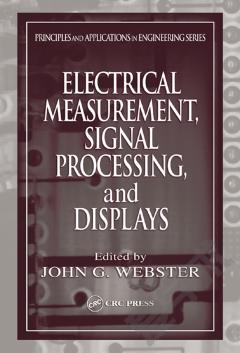Measuring Current, Voltage and Power
This authoritative new book focuses on recent developments in the instrumentation for sending voltages and currents. It covers new trends and challenges in the field, such as measurements of biocurrents, the increased speed of the components for data taking, testing of computers and integrated circuits where the measurement of rapid voltage and current variations on a very small geometrical scale is necessary. The first chapter concentrates on recent methods to sense voltages and currents, while the rest of the book investigates the applied side, covering for instance electrical power and energy measurements. The main purpose of this volume is to illustrate commonly employed techniques rather than track the scientific evolution and merits and therefore mainly covers patent literature aimed at industrial applications. It is an exciting addition, justifying the series' claim to cover state-of-the-art developments in both the applied and theoretical fields of sensors and actuators.The measurement of voltages and currents is a common task in the field of electricity and electronics. From a technical point of view it is useful to identify schematically different steps of such a measurement. In a first step a voltage or a current is sensed, intermediate steps such as amplification, transmission and further treatment may follow to yield the result in the final step. Today in most cases microprocessors perform the final steps of such measurements. Analog-to digital converters digitise a voltage that is proportional to the value to be measured and a processor performs further computations and handles the storage and the display of the results.
{{comment.content}}








 京公网安备 11010802027623号
京公网安备 11010802027623号